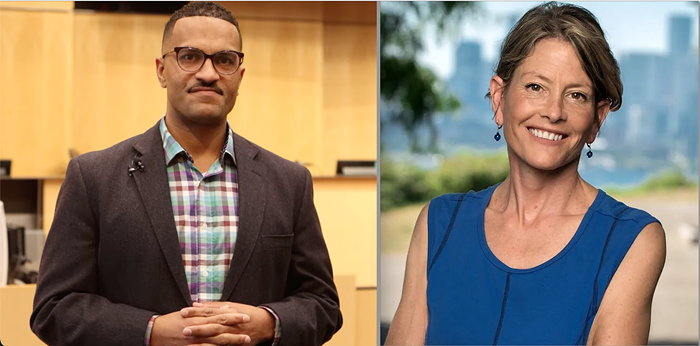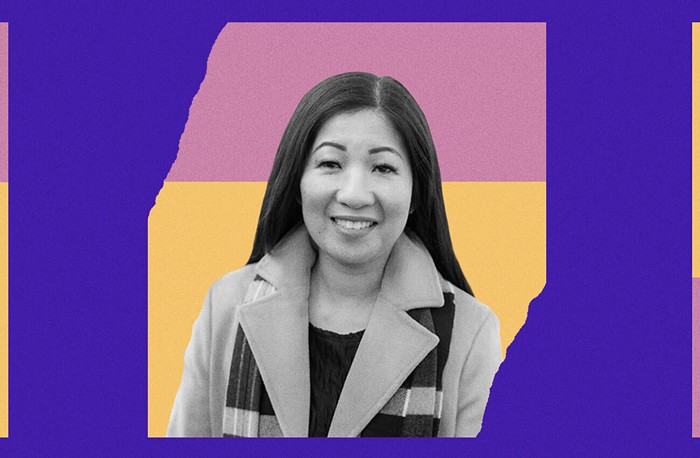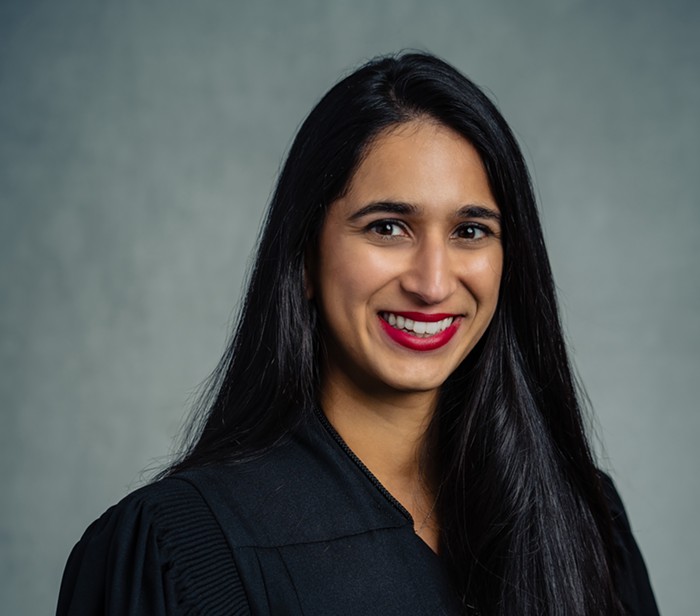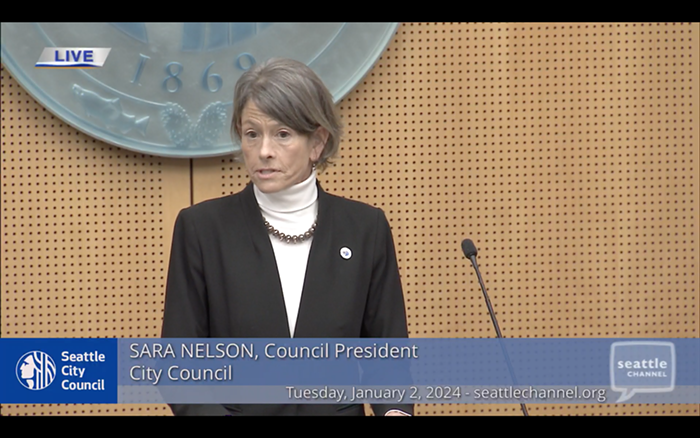Mayor Bruce Harrell finally unveiled his One Seattle Comprehensive Plan, a state-required document that maps out the city’s next two decades of housing growth. Density advocates have been pressuring him to release the long-delayed plan for months, but it looks like they will have to keep bugging him if they want the zoning reforms they demanded in “Alternative 6,” an ambitious plan that the City rejected despite strong community support.
Half as Much Housing as Advocates Wanted
Harrell’s plan, which would allow at least 100,000 new units over the next 20 years, sticks closer to the status quo than to the vision of abundant housing put forward by advocates. If the City changed absolutely nothing, developers could build 80,000 more units over that 20-year period, according to the newly released Environmental Impact Study. Harrell’s plan would allow for at least 20,000 more than the do-nothing option; the plan form housing advocates would have allowed for 200,000 new units to meet the needs of the rapidly growing City.
In a press briefing Monday, Long-Range Planning Manager Michael Hubner and Office of Planning & Community Development Director Rico Quirindongo sounded like urbanists in blaming our current housing crisis on the City's failure to allow developers to build at the scale of projected population and job growth rates. But if Harrell’s plan does not exceed their “conservative” projections, then population growth would once again outpace development. City officials project the population to grow by more than 200,000 people by 2044.
When reporters pointed out that that math didn’t math, the Mayor’s spokesperson, Jamie Housen, said that the number of units does not equal the number of people housed. According to 2020 Census estimates, Seattle households average about 2.05 people per unit. The planners also stressed the importance of the “at least” qualifier in the comp plan. Who knows maybe Harrell’s plan will overperform to accommodate more than just coupled transplants and roommates of two?
Perhaps, but it would need to really, REALLY overperform to meet the need because Seattle is in a housing deficit. Even if developers built enough units for everyone they think will move here, a recent report estimates the city needs 120,000 new units immediately and then 82,000 more every year to keep up with the projected growth. God forbid they allow enough housing to keep prices down.
The End of Urban Villages Begets More Urban Villages
The new plan gets rid of the “urban village” model–in name, at least. The City will now refer to the 24 urban villages as “urban centers.”
In practice, Harrell’s plan still uses the infamous “urban village” model, a strategy of concentrating development and reserving the vast majority of Seattle’s land mass for single-family homes in neighborhoods that historically excluded people of color. In The Stranger, writer and thinker Shaun Scott called the model the “original sin of urban planning.” Even the planning office's own racial equity analysis found that the City should rework its urban villages to avoid racist, exclusionary housing outcomes. It’s that bad.
Harrell’s plan seems to heed the racial equity analysis’ advice to spread growth to more areas of the city, which might make Seattle’s zoning scheme feel less like modern-day redlining. Hubner said that every single neighborhood in Seattle will see increased density under this plan. The plan doesn’t even include single-family zoning or its 2021 rebrand, “neighborhood residential zoning.” Instead, the plan calls these areas “urban neighborhoods.” And, honestly, as much as I love to hate, I think that’s a powerful rebrand. We are a city, god dammit.
And, to be clear, that’s not just a simple name-change. Under recently passed House Bill 1110, the City must legalize fourplexes in basically every corner of the City and also sixplexes near transit. The One Seattle Plan went one step further and would also legalize corner stores in every area of the City, a policy that just died in the Legislature.
Nevertheless, the City will concentrate the majority of new construction—about 40%—in seven “regional centers”—Downtown, Uptown, South Lake Union, First Hill/Capitol Hill, University District, Northgate, and, newly joining that designation, Ballard. About 30% of the construction will funnel into 24 urban centers. Most of those “urban centers” already exist as “urban villages,” but Harrell’s plan rezones the area surrounding the future NE 130th Street Light Rail Station and expands existing ones in Greenwood, Upper Queen Anne, West Seattle Junction, Admiral, Morgan Junction, and Othello.
According to Hubner’s rough estimates, that adds up to approximately 70% of all new growth going to regional centers (7% of land mass) and urban villages (14% of land mass), sort of the same places planners shoved it in the last plan. By comparison, about 83% of growth happened in these areas in the last 10 years, according to an OPCD handout. That means “urban neighborhoods” and the newly designated “neighborhood centers” will absorb (very roughly) 30% of new growth in the next 20 years compared to about 17% in the last 10 years.
Neighborhood centers will attempt to bring a “15-minute City lifestyle” to 24 more areas near transit and retail. One such neighborhood will be Maple Leaf. Maple Leaf already has some apartment buildings and small businesses, but Harrell’s plan would allow for upzones in some of the surrounding single-family zones.
About HB 1110…
The City needed to write a Comprehensive Plan that complied with HB 1110, which means Seattle must allow at least four units on every residential lot. This plan does not fulfill that requirement.
Instead, Harrell proposed a “two-tiered” implementation system for HB 1110. The City identified areas in North Seattle, South Seattle, and near the Duwamish that currently face a high risk of displacement if developers get the go-ahead to build fourplexes. Under the two-tiered system, Harrell proposes those neighborhoods would only have to allow triplexes. The planners did not know how much potential housing would be lost due to that two-tiered scenario, but they said that the rule applied to well under 25% of Seattle’s land mass, as stipulated for environmental exemptions by HB 1110’s “alternate compliance option.”
Harrell hinted at watering down HB 1110 last May. He told Axios that he wanted to use the law’s “alternate compliance option” to exclude high-risk areas. However, as I reported last year, the author of the bill, Rep. Jessica Bateman (D-Olympia), disagreed with his interpretation of her legislation.
Bateman told The Stranger last year that the alternate compliance options allow cities to exclude up to 25% of its land mass over environmental concerns so long as those areas are not within half a mile of major transit or once subject to racially restrictive covenants.
The bill’s actual anti-displacement mechanism allows cities to delay implementation for up to 10 years in areas that the Washington State Department of Commerce deems high-risk for displacement.
In the Monday briefing, Hubner acknowledged the anti-displacement delay mechanism but added that “we understand the statute also allows us broad flexibility to identify any area up to the 25%. It’s the priority of the City to take a hard look at what this might mean in areas of high risk of displacement and to use that flexibility to explore that option. And we understand that would not sunset, but that would be permanent zoning in those areas.”
In a follow-up email, the OPCD backed up its argument for using the alternate compliance option by citing RCW 36.70A.635, subsection 4, which says the 25% exemption applies to "any areas within the city for which the department has certified an extension of the implementation timelines under RCW 36.70A.637 due to the risk of displacement." But RCW 36.70A.637 specifically allows extensions to implementations, not to exemptions. So, as Bateman argued in a phone call with The Stranger last year, she and the Legislature wrote the bill requiring cities to legalize fourplexes in 75% of their areas but allowing 25% for permanent exemptions due to environmental concerns and delays to help mitigate displacement as outlined in the RCW 36.70A.637.
Advocates will also have the opportunity to fight for a more ambitious plan during the City’s public engagement campaign in March and April. The City will conduct more community outreach in the second half of the year and then pass a final comprehensive plan by the end of the year.




















